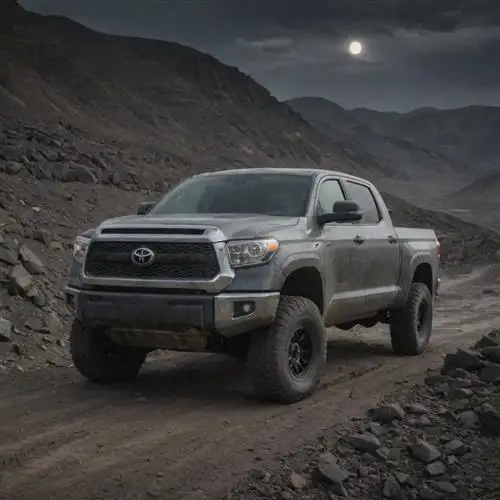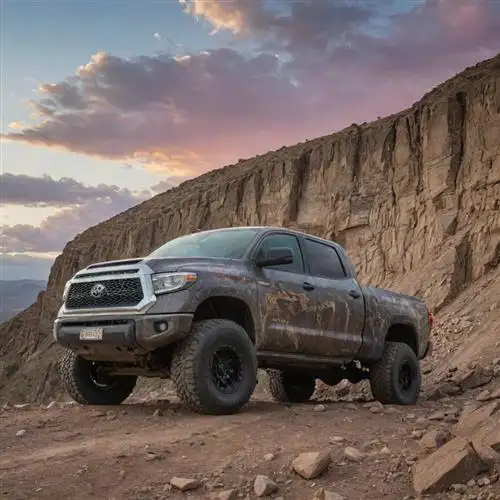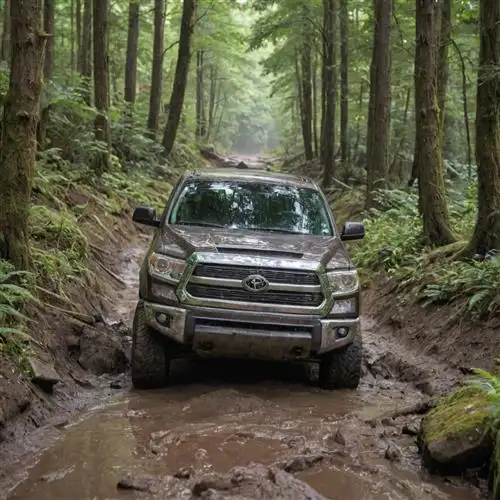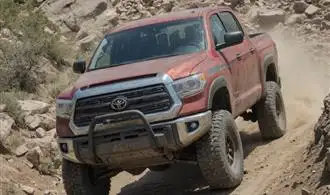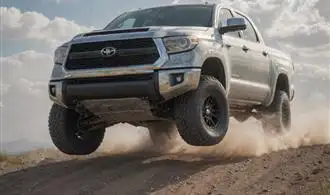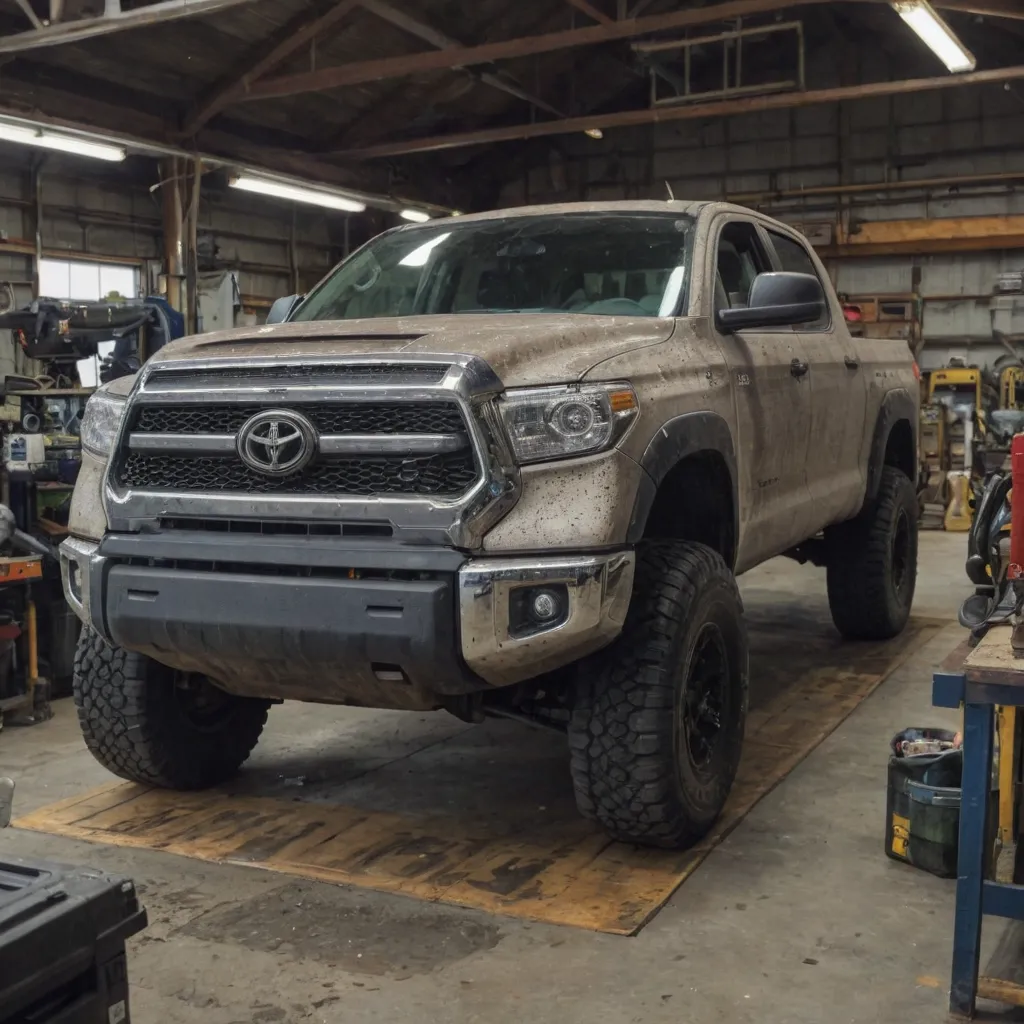
Equipping Your Toyota Tundra for Off-road Adventures
Embarking on off-road adventures with your Toyota Tundra requires careful equipment selection. The right gear can make all the difference in ensuring a safe and thrilling experience. Start with a reliable set of all-terrain or mud-terrain tires that can handle the demands of rugged terrain. Look for tires with deep, aggressive tread patterns and reinforced sidewalls to tackle obstacles with confidence.
Next, consider upgrading your suspension system. Lift kits, shocks, and struts can provide the necessary clearance and articulation to navigate over rocks, logs, and uneven surfaces. Research reputable brands and consult with experienced off-road enthusiasts to ensure your suspension modifications are compatible with your Tundra and provide the desired performance.
Skid plates are essential for protecting the undercarriage of your Tundra from damage caused by rocks, stumps, and other obstacles. Opt for heavy-duty skid plates made of durable materials like steel or aluminum to shield critical components like the oil pan, transmission, and transfer case.
Equipping your Tundra with a set of recovery gear is crucial for off-road adventures. This includes a high-quality tow strap, a winch (either mounted on the front bumper or a portable model), and a set of recovery boards or traction mats. These tools can help you extract your vehicle from mud, sand, or deep ruts if you become stuck.
Consider adding auxiliary lighting to your Tundra, such as LED light bars or off-road-specific driving lights. These can greatly enhance visibility and illuminate the trail ahead, especially during night-time excursions or in low-light conditions.
Mastering Traction and Stability on Uneven Terrain
Mastering Traction and Stability on Uneven Terrain is a crucial aspect of off-road driving in the Toyota Tundra. Navigating through rugged landscapes, loose gravel, and challenging inclines requires a deep understanding of your vehicle's capabilities and the techniques to maintain control. One of the primary factors in achieving optimal traction and stability is the Tundra's four-wheel-drive system, which allows you to seamlessly transition between two-wheel and four-wheel-drive modes depending on the terrain. By engaging the four-wheel-drive system, you'll experience enhanced grip, improved weight distribution, and better control over your vehicle's movement.
Equally important is the Tundra's suspension system, which plays a vital role in maintaining stability on uneven terrain. The truck's robust coil-spring and shock absorber setup, combined with its high ground clearance, enable it to navigate over obstacles and maintain a steady, composed ride. When traversing challenging off-road conditions, it's essential to adjust your driving style to accommodate the changing terrain. This may involve reducing your speed, anticipating upcoming obstacles, and being mindful of your vehicle's weight transfer to optimize traction and stability.
Another key aspect of mastering traction and stability on uneven terrain is the effective use of your Tundra's electronic driving aids. Features like the available Crawl Control and Multi-Terrain Select systems can significantly enhance your off-road performance by automatically adjusting the vehicle's torque distribution and traction control to suit the specific conditions. By utilizing these advanced technologies, you can navigate through tricky terrain with confidence, ensuring your Tundra remains stable and firmly planted on the ground.
Finally, the proper selection and maintenance of your Tundra's tires play a crucial role in maximizing traction and stability on uneven terrain. Investing in high-quality, all-terrain or off-road-specific tires can provide the necessary grip and durability to tackle challenging environments. Additionally, regularly inspecting your tire pressure and tread depth can help maintain optimal performance and prevent unexpected slips or loss of control.
Navigating Steep Inclines and Descents with Confidence
Mastering the art of off-road driving in a Toyota Tundra requires a deep understanding of vehicle dynamics and terrain management. When it comes to tackling steep inclines and descents, a methodical approach is crucial to ensure the safety and stability of your Tundra. Begin by assessing the terrain ahead, taking note of the grade, surface conditions, and any potential obstacles. Engage the appropriate four-wheel-drive mode and select the optimal gear ratio to maintain control and momentum.
When climbing a steep incline, avoid sudden acceleration or braking, as this can cause the wheels to lose traction and the vehicle to become unstable. Instead, maintain a steady, moderate throttle input and allow the Tundra's powerful engine and low-range gearing to do the work. Utilize the Tundra's hill-start assist and downhill assist control features to seamlessly navigate the ascent without losing control.
Descending a steep slope requires equal caution and attention. Engage the low-range gearing and use the engine braking to control the Tundra's speed, avoiding the reliance on the service brakes alone. This will help prevent brake fade and ensure a smooth, controlled descent. Additionally, consider using the Tundra's crawl control feature, which automatically modulates the throttle and brakes to maintain a steady, pre-set speed, allowing you to focus on steering and navigating the terrain.
Proper weight distribution is also crucial when traversing steep inclines and descents. Ensure the Tundra is properly loaded, with heavier items positioned low and centered in the cargo area. This will help maintain the vehicle's stability and prevent excessive body roll or pitch.
Adapting Your Driving Techniques for Different Off-road Conditions
Navigating the rugged terrain of off-road adventures in your Toyota Tundra requires a keen understanding of how to adjust your driving techniques to the varying conditions you'll encounter. From traversing rocky inclines to tackling muddy trails, each environment demands a specific set of skills to ensure a safe and smooth ride.
When faced with steep inclines, it's crucial to maintain a steady, controlled pace. Avoid the temptation to accelerate too quickly, as this can cause your tires to lose traction and send you careening down the slope. Instead, engage your four-wheel drive system and use a lower gear to climb steadily, modulating the throttle to maintain control. Keep your eyes focused on the path ahead, and be prepared to make slight adjustments to your steering to navigate the changing terrain.
Navigating through mud and soft, wet terrain can be a true test of your off-road driving prowess. In these conditions, momentum is your ally. Approach mud pits and soft, marshy areas with a steady, consistent speed, avoiding sudden acceleration or braking. Keep your wheels moving to maintain momentum, and be prepared to make quick, subtle adjustments to your steering to stay on course. If you find yourself stuck, resist the urge to simply spin your wheels, as this can dig you in deeper. Instead, try gently rocking your vehicle back and forth to work your way out.
When traversing rocky or uneven terrain, your focus should be on protecting your vehicle's undercarriage. Approach obstacles slowly and carefully, maintaining a steady, deliberate pace. Avoid sudden movements or sharp turns, as these can put undue stress on your suspension and other critical components. If necessary, engage your vehicle's crawl control or low-range gearing to maintain a controlled, steady pace over the rocky terrain.
Maintaining Your Toyota Tundra's Off-road Performance
Owning a Toyota Tundra is a badge of honor for off-road enthusiasts. This rugged and capable truck can take you to the most challenging terrains, but maintaining its off-road performance requires diligence and attention to detail. From proper tire selection to suspension upgrades, the key to ensuring your Tundra remains a formidable off-road companion lies in these essential maintenance tips.
Tire selection is paramount when it comes to off-road driving. Choosing the right tires can make the difference between effortless traction and frustrating slippage. Look for all-terrain or mud-terrain tires with deep, aggressive treads that can grip onto loose surfaces, dirt, and rocks. Consider the terrain you'll be traversing and select tires accordingly, balancing traction, durability, and comfort for long-distance drives.
Suspension upgrades can transform your Tundra's off-road capabilities. Investing in quality shocks, springs, and lift kits can improve ground clearance, stability, and overall control when navigating challenging obstacles. Research and consult with reputable off-road experts to determine the best suspension modifications for your specific needs and driving style.
Regular maintenance is crucial for maintaining your Tundra's off-road performance. Ensure that all fluids, including engine oil, transmission fluid, and differential fluid, are changed at the recommended intervals. Inspect the brakes, steering components, and suspension parts for any signs of wear or damage, and address any issues promptly. Additionally, keep a close eye on your Tundra's skid plates and underbody protection, as these components can take a beating during off-road adventures.
Off-road driving can be hard on your Tundra's components, so it's essential to inspect and maintain them regularly. Check the condition of your tires, including the tread depth and air pressure, and replace them when necessary. Examine the suspension system for any signs of wear, such as leaks or uneven wear, and address any issues. Additionally, ensure that your Tundra's 4WD system is functioning correctly, as proper engagement and disengagement are crucial for off-road performance.


